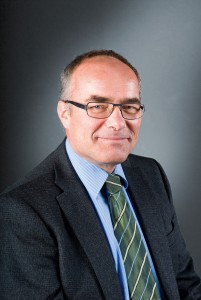
(Chief Editor Mining Report Glückauf)
Editorial
The application of mine ventilation technology is becoming an increasingly important -topic due to the many different factors and influences at play in this area, including technical and technological developments and the tougher new requirements that have been imposed in respect of occupational health and safety protection. This issue of Mining Report Glückauf therefore examines developments in mine ventilation over the course of recent decades and discusses the current challenges and possibilities that exist in this particular field.
The development of the mineral mining industry has always been characterised by an increase in the working depth, greater complexity in underground infrastructure and the introduction of new mining methods and technologies. This created a need not only to install underground ventilation systems in general but also to provide ever more effectively controlled ventilation in line with the demand for greater volumes of fresh air supplied to the workings. And this trend is still continuing. For mine ventilation engineers this means increasing demands and new problems. One particular approach, which mainly focuses on the cost aspect of the problem, has been based around the concept of ventilation on demand (VOD).
Having permanent access to individual ventilation parameters is crucial from a workplace safety point of view. An appropriate data measurement system can be set up to monitor these indicators, while at the same time these key data can be used as input for the simulation of dynamic ventilation models. The latter can facilitate the planning of operational activities and make a real contribution to workplace safety.
Nevertheless, serious incidents such as gas explosions can never be ruled out entirely. One potential solution to the problem of how to rescue imperilled miners after an event of this kind involves the use of refuge chambers. The effectiveness of such a solution is discussed in some detail using experiences gained from the coal mining industries of the USA and Australia.
As well as workplace safety, industrial health and safety protection – which essentially means preserving employees’ ability to work – continues to present companies with all kinds of challenges. In many EU member states the age of retirement is increasing and many employees will now be staying in work longer. This raises questions for occupational prevention. In this issue’s section on ISSA Mining we will be presenting the measures for promoting good practical solutions and improving health and safety standards as they have been proposed under the EU strategic framework for health and safety at work.
While the second issue of Mining Report 2017 covered developments in the German coal market in 2016, this fourth issue provides a corresponding status report on the situation in the lignite sector.
With my best regards
Dipl.-Ing. Andreas-Peter Sitte
Chief Editor Mining Report Glückauf, Essen